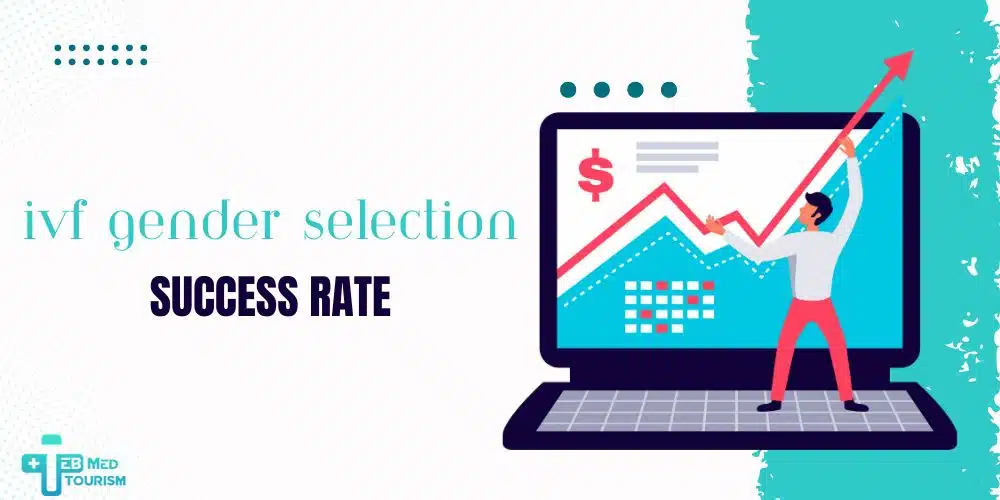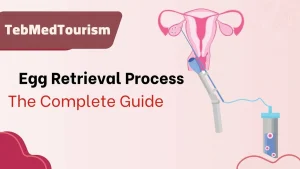In vitro fertilization (IVF) is a widely used medical technique to help individuals and couples struggling with infertility. It has brought many families the joy of having children. But beyond helping with fertility, IVF also offers a possibility many people are curious about: choosing the gender of their baby. This process, known as gender selection or family balancing, allows parents to choose whether they will have a boy or a girl. With advancements in reproductive medicine, you can now choose gender with IVF, making this option more accessible than ever. While it might sound like something out of a science fiction movie, it’s actually a real option. In this article, we’ll explore how gender selection works with IVF and what factors come into play when making this decision.
What Is Gender Selection with IVF?
Gender selection with IVF refers to the process of choosing the sex of a baby before pregnancy occurs. This is done through Preimplantation Genetic Testing (PGT), which is a technique used to screen embryos created during IVF for specific traits, including gender. When a couple undergoes IVF, several embryos are created in the lab. These embryos are then tested for their genetic makeup, including whether they carry an X (female) or Y (male) chromosome. Based on this testing, the embryos of the desired sex can be selected and implanted into the mother’s womb.
Gender selection is often used by couples who have medical or personal reasons for choosing the sex of their child, such as balancing the genders in their family or avoiding certain genetic disorders linked to a specific sex. While it is not available everywhere and is regulated differently by country, it has become a popular option for many families through IVF.
How Does Gender Selection with IVF Work?
IVF gender selection begins with the standard IVF process, where eggs are retrieved from the mother and fertilized with sperm in a laboratory. After fertilization, several embryos are created and grown in a controlled environment for a few days. At this stage, doctors use Preimplantation Genetic Testing (PGT) to screen the embryos. PGT can identify the sex chromosomes of each embryo. Female embryos will have two X chromosomes (XX), while male embryos will have one X and one Y chromosome (XY).
With advancements in reproductive medicine, parents can now choose gender with IVF by selecting embryos of the desired gender. Once the embryos are tested, the ones with the desired gender are selected for implantation. The selected embryos are then transferred into the mother’s uterus. Only the embryos with the chosen gender are implanted, while others may be frozen for future use or discarded, depending on the parents’ decision.
This process allows couples to increase their chances of having a child of the gender they prefer, with the added benefit of avoiding certain genetic diseases linked to gender.
Success Rate of Gender Selection with IVF
The success rate of gender selection with IVF is closely tied to the success of the IVF process itself, which varies depending on factors like the mother’s age, overall health, and the quality of the embryos. Generally, IVF has a success rate of about 40–50% for women under 35, and this rate decreases as the woman’s age increases.
When it comes to gender selection, the accuracy of the method is high. For couples who wish to have a baby boy, the process has a 99% accuracy rate, while for those hoping for a baby girl, the success rate is around 97%. These high success rates are primarily based on the effectiveness of PGT, which ensures the embryos are correctly identified by their gender chromosomes.
However, it’s important to note that these success rates are contingent on the successful implantation of the selected embryo. Even with high accuracy in gender selection, the final outcome depends on factors like embryo quality, uterine health, and the overall IVF procedure. As with any medical procedure, there is no guarantee, but the chances of success are significantly improved when all aspects of IVF are optimized.

Can You Choose Gender with IVF in the USA and Other Countries?
IVF gender selection, or family balancing, allows parents to choose their baby’s sex before conception. The legality of this practice varies worldwide. In the U.S., gender selection is legal for both medical and non-medical reasons, making it a top choice for family balancing. However, in many countries, such as Spain and the Czech Republic, it is allowed only for medical purposes.
Iran is an affordable destination where gender selection is legally permitted for family balancing, attracting many international patients. Similarly, Thailand has fewer restrictions, making it another popular option. In contrast, countries like India, the UK, and Canada prohibit non-medical gender selection to prevent gender imbalances. Saudi Arabia and Malaysia limit it strictly to medical necessity under ethical guidelines.
Couples must consider local laws, ethical standards, and practical factors like costs and logistics when choosing a destination for IVF gender selection. Countries like the U.S. and Iran offer greater flexibility, but careful planning is essential.
To learn more about gender selection laws in various countries, check out our article “Gender Selection Rules in Different Countries.”
Why Do People Choose Gender Selection with IVF?
Many couples turn to IVF for gender selection due to personal, medical, or cultural reasons. One of the most common motivations is family balancing—parents who already have children of one gender may wish to have a child of the opposite gender to create a more balanced family dynamic. This desire for a specific gender often stems from emotional or practical reasons, such as fulfilling long-held dreams of having both sons and daughters. For instance, parents can choose PGD for baby boy or PGD for baby girl to achieve their family-balancing goals.
Another significant reason for IVF gender selection is the prevention of sex-linked genetic disorders. Certain medical conditions, such as hemophilia or Duchenne muscular dystrophy, are linked to specific sex chromosomes. By using Preimplantation Genetic Testing (PGT), doctors can identify embryos of the desired gender and reduce the risk of passing on such genetic conditions to the child. This makes IVF with gender selection and PGT an essential option for couples with a family history of genetic diseases.
Cultural preferences also play a role in some regions, where societal or traditional values place importance on having children of a specific gender. For these couples, IVF offers a scientific solution to meet their cultural expectations while ensuring a healthy pregnancy. Whether for family balancing, genetic health, or cultural reasons, IVF gender selection allows families to plan their future with confidence, addressing both personal and medical needs.
Can You Do IVF Just for Gender Selection?
Yes, it is possible to undergo IVF specifically for gender selection, but this choice often depends on personal reasons and medical advancements rather than legal regulations. Many couples opt for IVF gender selection to balance their family or fulfill a lifelong dream of having a child of a specific gender. Using Preimplantation Genetic Testing (PGT), doctors can identify the gender of embryos before they are implanted, making it an effective and precise method.
Gender selection through IVF can also be a proactive choice for families with a history of sex-linked genetic conditions. By selecting embryos of a specific gender, parents can reduce the risk of passing on these disorders, ensuring a healthy child. This medical benefit often motivates couples to pursue IVF for gender selection, even when fertility is not an issue.
While the process is technically feasible, couples should carefully consider the emotional, ethical, and financial aspects of undergoing IVF solely for gender selection. The procedure requires time, resources, and commitment, so making an informed decision is essential. Consulting with medical professionals and counselors can help ensure that this choice aligns with the family’s goals and values.
Risks and Challenges of Gender Selection Through IVF
While gender selection through IVF offers precision and control, it also comes with certain risks and challenges that couples should consider:
Medical Risks
The process of gender selection through IVF involves medical procedures that carry potential risks. Hormonal stimulation used to produce multiple eggs can sometimes cause ovarian hyperstimulation syndrome (OHSS), leading to symptoms like abdominal pain, bloating, or nausea. Additionally, egg retrieval and embryo transfer come with a small chance of complications such as infection or bleeding, although these are rare under proper medical supervision.
Emotional and Financial Strain
IVF is both emotionally and financially demanding. The inclusion of Preimplantation Genetic Testing (PGT) for gender selection adds to the overall cost, making the process expensive. For couples undergoing IVF purely for gender selection, a failed implantation or unsuccessful cycle can lead to disappointment and emotional distress, making it important to prepare for potential outcomes.
Ethical and Social Implications
Opting for gender selection can sometimes invite ethical dilemmas or societal criticism, especially in cultures where gender preferences are a sensitive topic. Couples may face internal conflicts about their choice or concerns about societal perceptions. These challenges highlight the need for thoughtful decision-making and counseling to ensure the choice aligns with personal values and goals.
How TebMedTourism Supports Gender Selection with IVF
TebMedTourism provides comprehensive and personalized services for couples seeking gender selection with IVF. Our expert team ensures a smooth journey, from initial consultation to post-procedure support. We partner with advanced medical facilities offering Preimplantation Genetic Testing (PGT) for high accuracy and coordinate travel, accommodation, and logistics for a stress-free experience.
By choosing TebMedTourism, you benefit from world-class fertility specialists, cost-effective packages, multilingual support, and exceptional care. With high success rates and tailored services, TebMedTourism ensures your journey toward gender selection with IVF is as seamless and successful as possible.
Conclusion
Gender selection with IVF has emerged as a groundbreaking option for couples seeking family balancing, preventing genetic disorders, or fulfilling cultural and personal goals. Thanks to advanced techniques like Preimplantation Genetic Testing (PGT), this process offers high accuracy and tailored solutions for parents worldwide.
However, it’s essential to consider the legal, ethical, and financial aspects before making a decision. By partnering with experienced providers like TebMedTourism, couples can navigate the complexities of IVF gender selection with confidence, ensuring a seamless and supportive journey toward their dream of building or balancing their family.
Let TebMedTourism guide you every step of the way—because your family’s future starts with the right choice today.
Frequently Asked Questions About Gender Selection in IVF
Gender selection with IVF is an exciting option for many couples, but it’s natural to have questions about how the process works, its success rates, and what to expect. To help you make an informed decision, we’ve compiled answers to some of the most common questions about gender selection.
Can you pick gender with IVF?
Yes, you can select the gender of your baby with IVF through a process called Preimplantation Genetic Testing (PGT). This method allows doctors to examine embryos for genetic conditions and determine their gender before implantation. Gender selection is often done for medical or family balancing reasons, depending on the laws of the country.
What is the success rate of Gender Selection with IVF?
The success rate of IVF gender selection depends on the success of the IVF process, which is about 40–50% for women under 35 and decreases with age. The gender selection itself is highly accurate, with a 99% accuracy for boys and 97% for girls. However, successful implantation and pregnancy depend on factors like embryo quality and uterine health.
Can gender selection be done if eggs or sperm are not healthy?
Gender selection cannot be done effectively if eggs or sperm are not healthy, as these are critical for creating viable embryos. Poor egg or sperm quality can reduce the chances of successful fertilization and lead to fewer embryos for testing. Improving reproductive health is often recommended before starting IVF with gender selection.
How much does gender selection with IVF cost?
The cost of gender selection with IVF typically starts at around $6,000, depending on the clinic and additional procedures required. This price usually includes Preimplantation Genetic Testing (PGT) but may vary by location and services.
Can I combine gender selection with IVF for twins?
Yes, you can combine gender selection with IVF for twins by selecting two embryos of the desired gender during the Preimplantation Genetic Testing (PGT) process. However, the success depends on the quality of the embryos and successful implantation.









